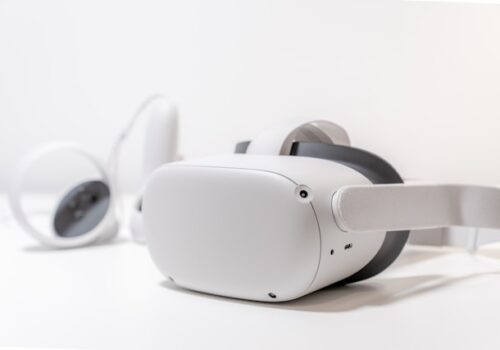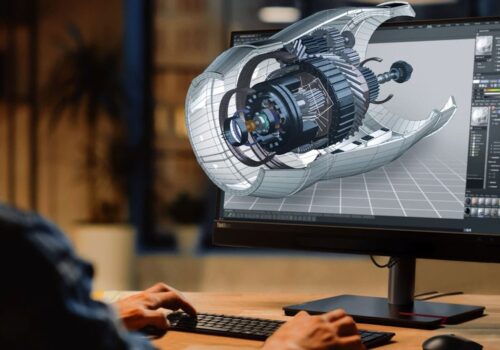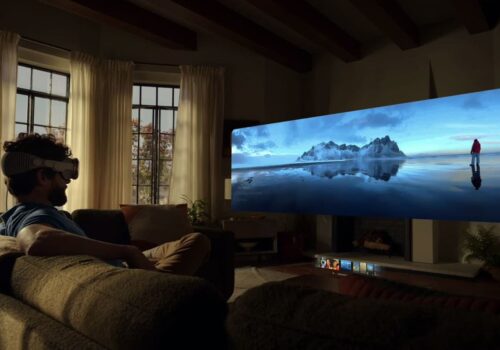How Virtual Reality Can Be Useful In Different Industries
VR has gone through different stages of development in the last decades, and they’re getting better and more realistic. If it continues to develop at this rate, it is poised to revolutionize how we do things in our everyday lives, such as shopping, communicating, etc.
People commonly associate VR with gaming and recreational activities. But this technology has more potentials, and a number of companies can benefit from it. In fact, VR is already being used in some sectors to improve the human experience. This is because numerous companies have identified ways VR can be used to yield maximum results in their operations.
What is VR, and In What Industries Can They Function?
If you don’t know what VR is, here is a quick rundown: VR is used to describe a computer-generated simulation of an alternate world experienced with the help of special devices known as VR headsets. Whether VR, AR (augmented reality), or MR (mixed reality), the possibilities are endless with these technologies and here are places that they can be useful besides gaming:
Healthcare
There aren’t many better ways of using technology than saving lives. For healthcare professionals, virtual human anatomy and realistic virtual environments help them gain valuable insight into what it feels like working on a real human body. It helps students and experienced professionals to use these fictional models to prepare themselves for real-life work on humans.
VR is also useful in treating mental health illnesses. For instance, VR Exposure Therapy (VRET) is effective in treating PTSD and anxiety. It uses realistic but fictional aversive stimuli to boost stress resilience and control negative symptoms.
VR in healthcare can also be useful in educating patients. With VR, patients can understand all about a particular disease or surgery they are facing beforehand. Textbooks, pamphlets, and internet search results can only do so much, but taking them into animations that help understand the complexities of a situation is particularly effective.
Automotive Industry
VR in the vehicle industry allows engineers and vehicle designers to create experimental design and build of their cars before commissioning them. Household names like BMW and Jaguar Land Rover are already using VR to provide detailed photo-realistic renderings of their vehicles.
In fact, in 2018, BMW debuted their new crossover SUV using a virtual driving experience that allowed users to enter the interior of the car and test drive. Additionally, in collaboration with Oculus Rift, Toyota developed a program known as TeenDrive365 to educate youngsters on safe driving. Other brands like Ford, Infiniti, and Mitsubishi are already testing the waters to capture the market with VR driving.
Gambling
VR now allows you to play poker with multiple players. It feels just like you’re in a real casino, and you can communicate with and read the body language of other players. So, instead of looking for a free spins casino, you could journey into one from the comfort of your home. The most common VR gambling is Poker VR, and they even have a fairly huge prize for winners.
Online Shopping
When buying clothes online, we usually wonder if they’ll be a good fit. Size charts help, but sometimes the outfits we buy still do not live up the expectations prior to purchasing. This is about to change with the introduction of body-scanners that allows you to test pieces of clothes and designs virtually. This helps you see what they would look like on your body. Companies like ASOS eBay are already entering VR and using it to improve the shopping experience.
Another way VR can improve retail is how you can see everything available for sale in a showroom from your home. You can see fabrics in multiple shades and check out device specifications before purchasing.
Aerospace
Like the automotive industry, the aerospace sector is another place where VR technology is becoming increasingly useful. With VR, professionals in the aerospace sector can improve their communication, understand employees, and create high-quality products.
They can also use VR to enable pilots into the interior of aircraft and test fly.
Education
Another sector VR can improve is education. VR can transform education by allowing students to learn using experimental and immersive technology. With VR in classrooms, students can go and virtual field trips and play realistic learning games. Its interactive nature can also improve the learning of children with special needs. This can improve the cognition and reasoning of students, make them creative and highly innovative.
Newsrooms
VR is already being used by the giants New York Times. Instead of listening to a news story, you can experience it in a way that feels like you were with the reporter. With the NYT VR app in full swing, it will not be long before other news agencies join them.
Tourism and Travel Agencies
What if you could experience your vacation a little bit before actually going? You get the feeling of what it would feel like being in Greece, Italy, the Maldives, or anywhere of your choice from your home through brief excursions. This is what VR can accomplish in the area of tourism. VR can be a compelling way for travel agencies to market new destinations and showcase accommodations using realistic VR technology when used right.
A real-life example of VR in tourism is Thomas Cook’s successful collaboration with Samsung Gear VR for ‘Try Before You Fly’ in 2015. It allows people to visit countries and experience the holiday using VR before booking their journey. Within the first three months, the innovation yielded more than £11,000 with a 40% ROI. There was also a 190% increase in New York vacation booking after people tried went to the city virtually for five minutes.
Conclusion
The use of VR in multiple sectors continues to gain momentum by the day. More and more companies are finding a use for them regardless of their business. If the industry you work in is not here, you’ll find that sooner or later, VR’s influence will begin to emerge. The technology is becoming more accessible and affordable with increasing adoption rates. Although it has not completely taken over, you cannot ignore the feeling it won’t be long.





